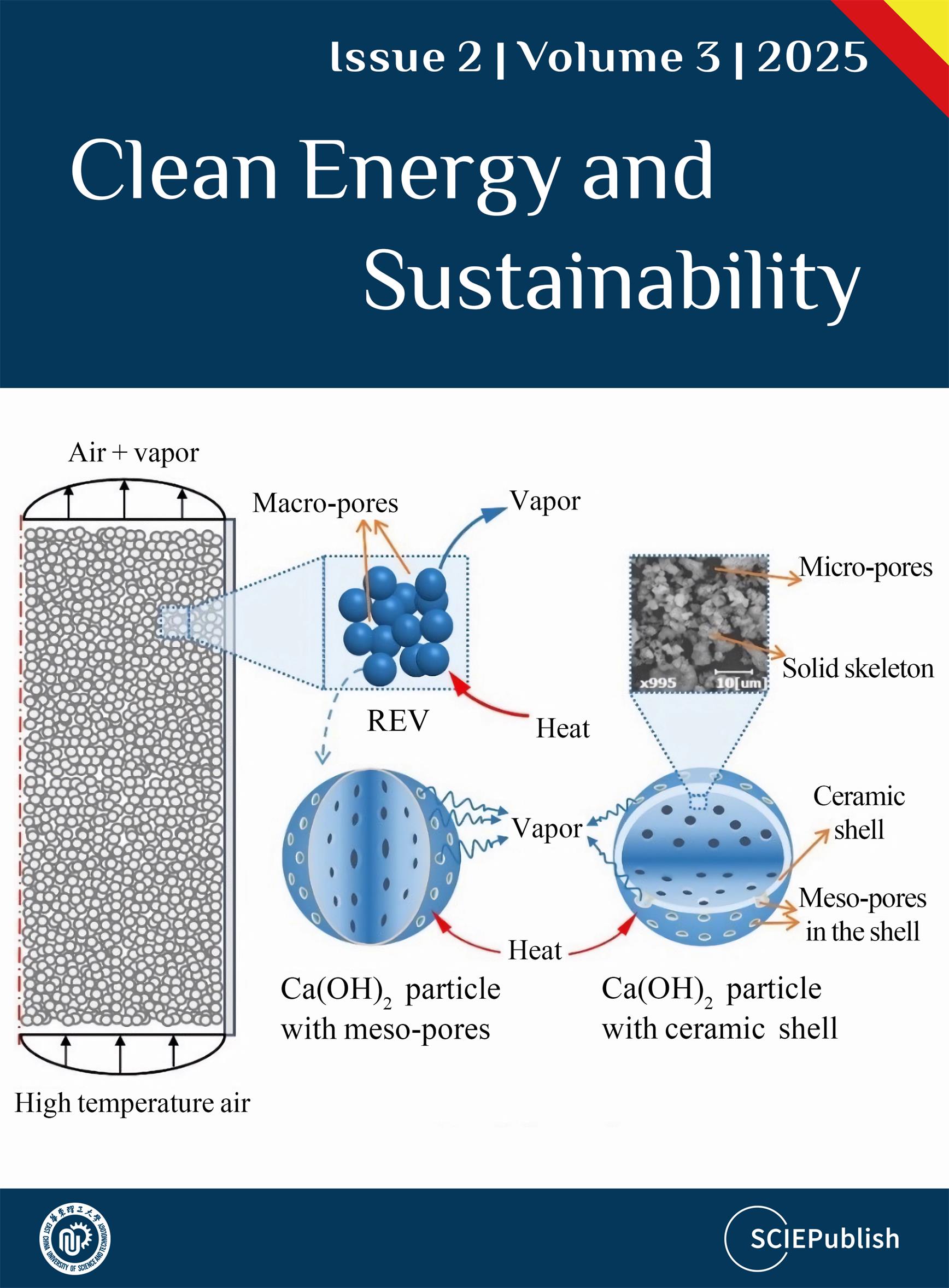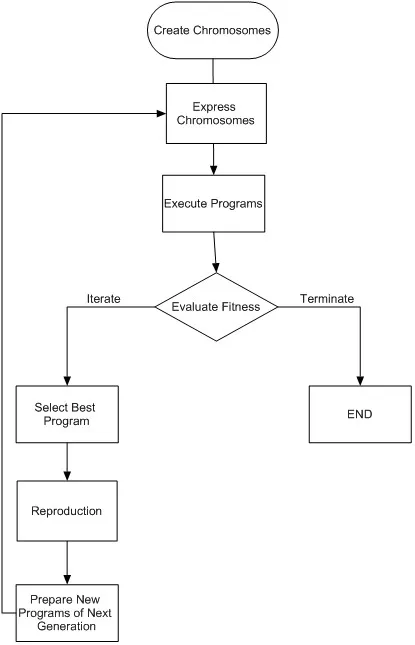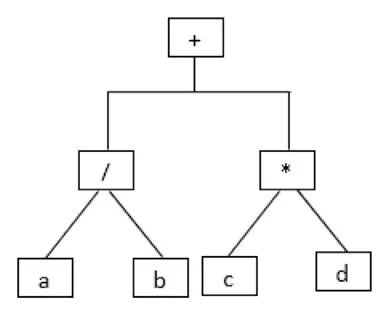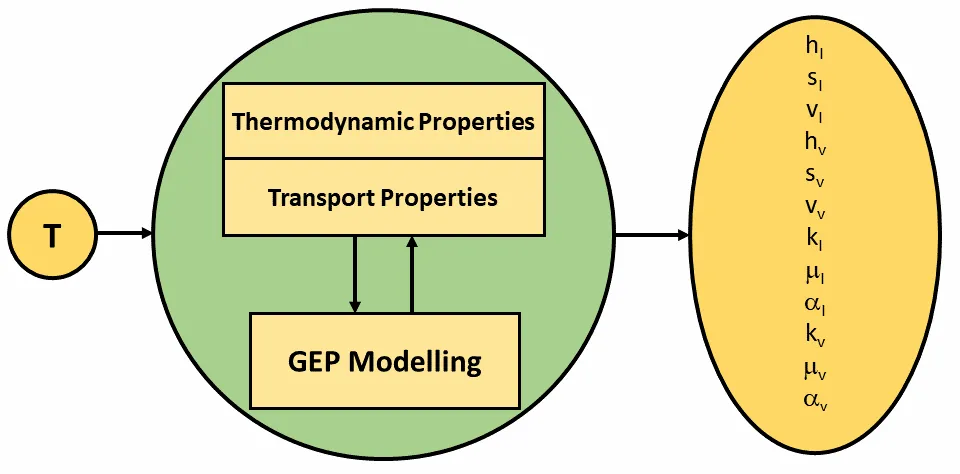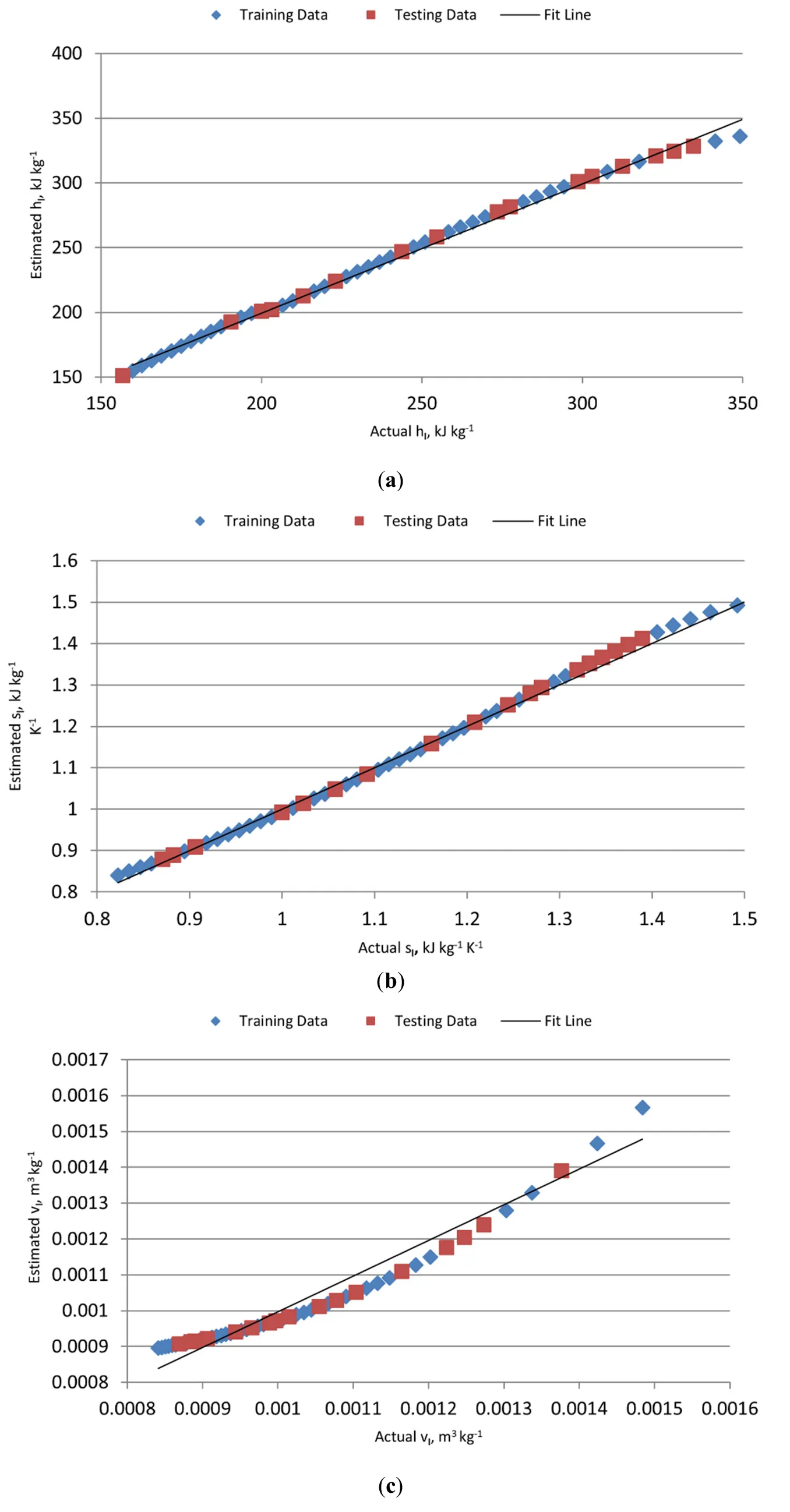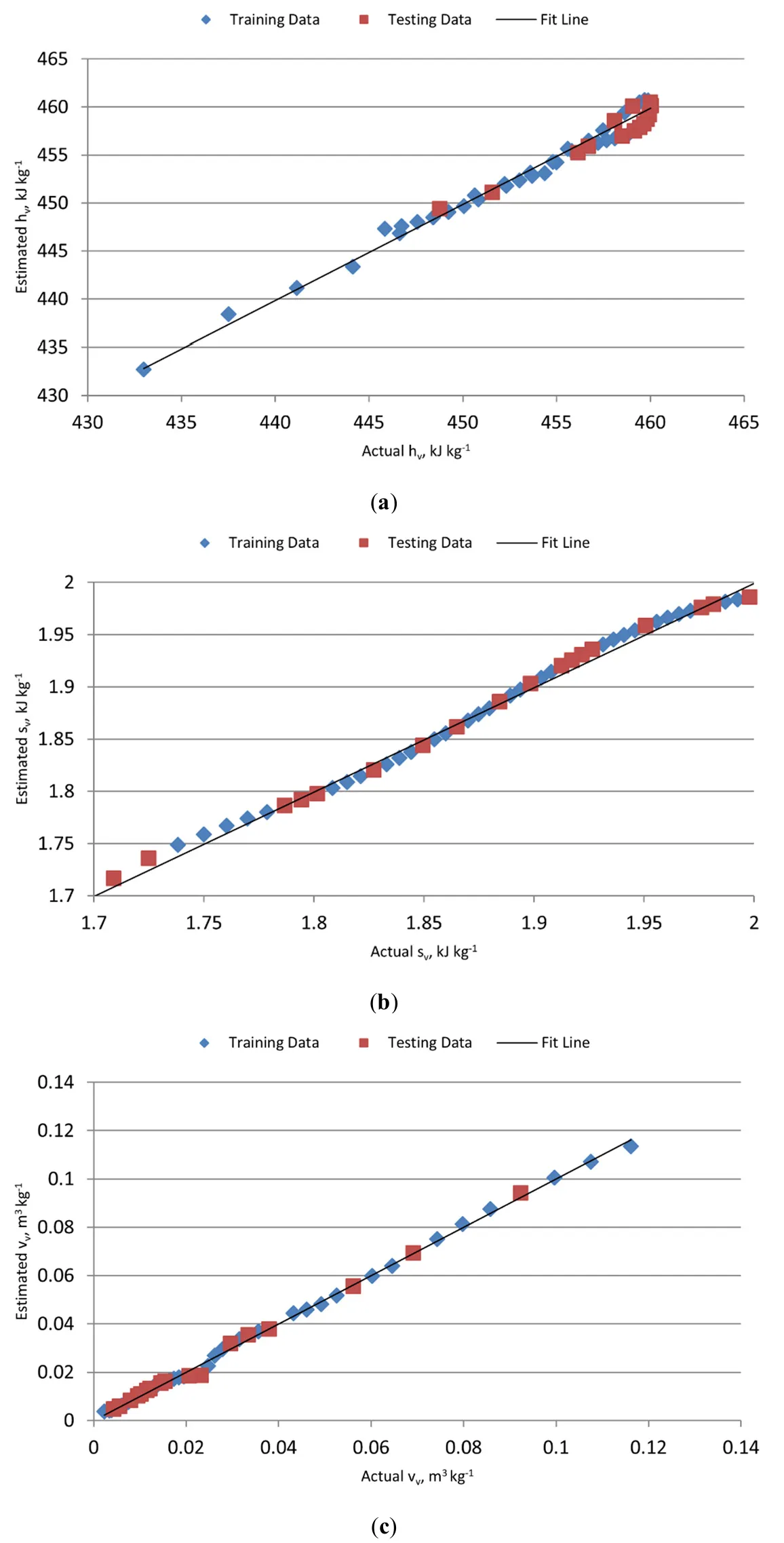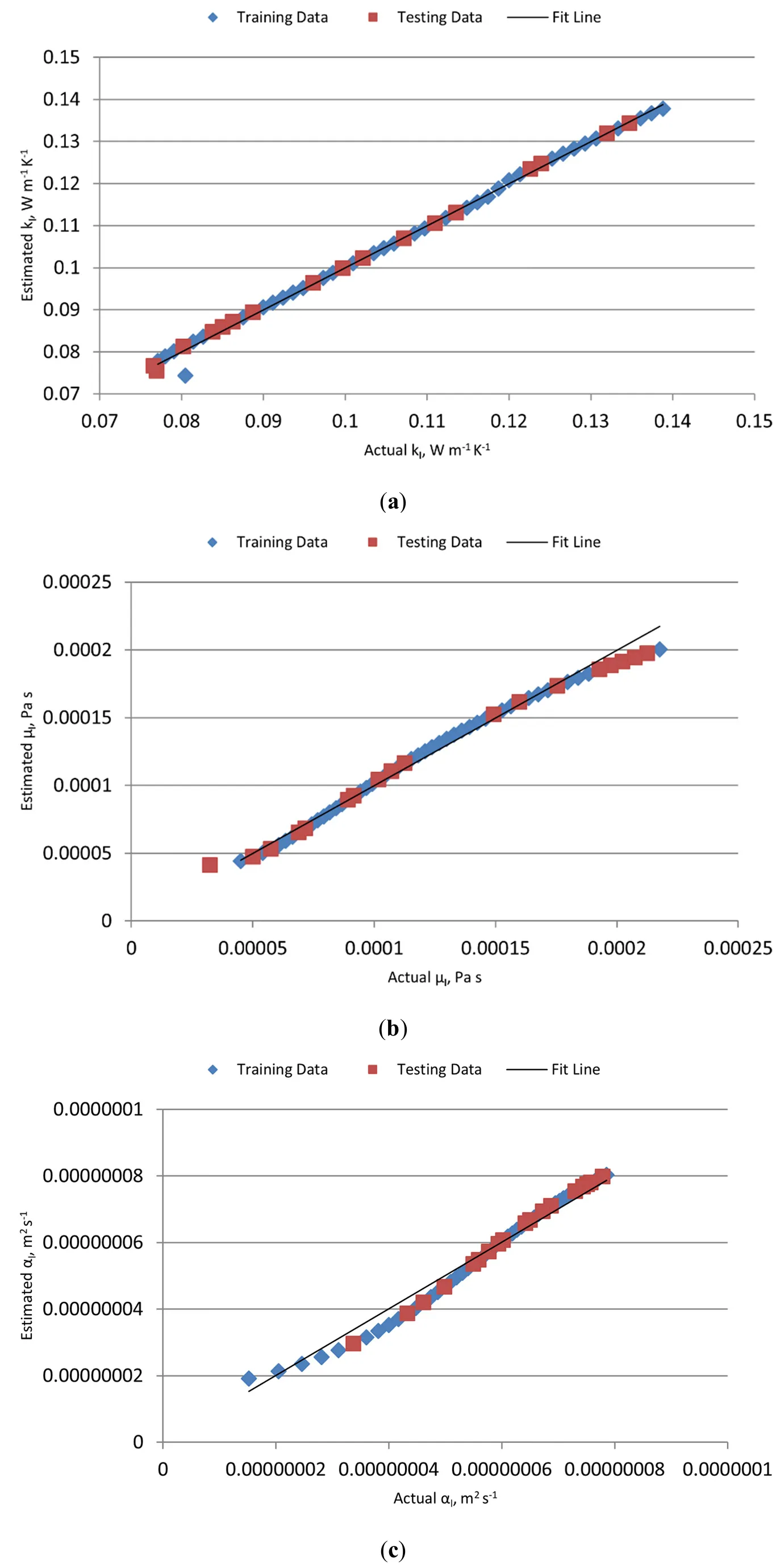1. Introduction
The refrigeration industry has a vital role in the socio-economic of countries. The economic and environmental impact of refrigeration technologies on the world’s countries is becoming more important, and this will continue to increase. While refrigeration systems and applications improve living conditions, these technologies also need to be environmentally friendly. The negative environmental impacts of refrigerant using refrigeration technologies, such as global warming and ozone depletion, have been recognized as a major problem. This matter could be achieved with the help of using environment-friendly refrigerants. Fluorochemicals and Hydrochlorofluorocarbons have been phased out due to concerns regarding climate change, high ozone depletion potential (ODP), and global warming potential (GWP), according to the Kyoto Protocol and Montreal Protocol. One such alternative, R452B, has emerged as a promising replacement for R410A due to its lower GWP and comparable thermodynamic properties. R410A, despite its widespread use in residential heat pumps and air conditioning systems, faces regulatory challenges due to its high environmental impact. R452B offers a lower-GWP alternative with similar efficiency, making it an attractive candidate for existing refrigeration systems with minimal modifications. In addition, the same compressor types, oils, and heat exchangers can be used in systems operating with both refrigerants [
1,
2,
3,
4,
5].
The modelling of a refrigeration system aims to reach the ideal remedy by reducing the error of a cost function. The refrigeration system modelling is related to the optimization of the energetic parameter [
6]. In determining these energy parameters, it is necessary to be accurately knowledgeable of the thermodynamic properties of the refrigerants. Achieving these properties can sometimes be highly difficult and costly for refrigerants.
There are few databases today for the transport properties of refrigerants, such as viscosity and thermal conductivity, required to meet engineering design requirements, and they often contain very high errors due to the difficulty in measuring and the absence of an appropriate theory [
7]. Determination of the thermodynamic properties and transport properties are based on functions of temperature and pressure.
Hydrofluorocarbons (HFCs) are still often used in air-conditioning equipment at present. However, they are in the fluorinated greenhouse gas group even though they have ozone-depleting potentials that are zero [
8]. R410A refrigerant is still the problem of phasing out because of the high GWP value [
9] R410A is commonly used in residential heat pumps and air conditioning systems because of its high operating pressures, energy efficiency, and cooling capacity. However, R134a is one of the refrigerants that largely contributes to global warming. R452B and R454B are similar in efficiency to 410A and have low GWP values.
Many theoretical and experimental studies have researched alternative refrigerants using low-GWP in refrigeration technology equipment designed for R410A using high-GWP. Saleem and Bradshaw [
10] presented a study in which a four-component heat pump model using R410A refrigerant was exercised using R452B and R454A. It was found that the COP increased by as much as 5% with R454B, while R452B had a lower COP compared to R410A during all the simulations. Shen and Ally [
11] analyzed the performance of lower-GWP alternative refrigerants R-32, R-452B, R-454B, and R-466A to the R-410A. R-452B and R-454B refrigerants consumed less compressor work while having a similar evaporator heat load to R-410A. In the study, R-454B refrigerant resulted in the highest COP, and R-466A refrigerant resulted in the lowest COP compared to R-410A refrigerant.Devecioğlu [
12] compared the refrigerants with low GWP values, namely R446A, R447A, R452B, and R454B, that could be used instead of R410A based on their seasonal energy efficiency ratio and seasonal coefficient of performance values. The SCOP results of R452B and R454B refrigerants are very close to the seasonal coefficient of performance value of R410A. R446A refrigerant has the lowest energy consumption, while R454B refrigerant has the lowest annual energy consumption for heating. Consequently, the R452B refrigerant is the most suitable, with a 3.92 seasonal coefficient of performance value among the alternative refrigerants. Sieres et al. [
13] studied the drop-in performance of refrigerants R452B and R454B in an R410A in a heat pump. R452B refrigerant indicated better the compressor’s electric power performance than R410A, but worse in terms of COP. R454B refrigerant showed similar COP values compared with R410A refrigerant.Hsu et al. [
8] investigated the heat transfer performance of the falling film evaporation and pool boiling of the refrigerants, namely R452B and R454B, instead of R410A. The heat transfer coefficient in falling film mode is inferior to that of pool boiling for the three refrigerants, R410A, R452B, and R454B. The empirical correlation was established based on near-azeotropic fluids’ falling film test data. Heredia-Aricapa et al. [
14] analyzed the new refrigerant mixtures (HFC/HFO/HC/R744) alternatives to substitute R134a, R404A, and R410A in their different refrigeration and air conditioning systems considering their classification and selection criteria concerning their thermodynamic and physical properties. Panato et al. [
15] developed an experimental setup and evaluated the efficiency of a refrigeration system with evaporation temperatures between −5 and 5 °C for the R410A refrigerant. The study indicated that alternative refrigerants have lower performance than the R410A refrigerant with energy efficiency, but they have lower GWP than they had a lower environmental impact. There have also been studies using artificial intelligence methods to predict different properties of refrigerants. Dikmen [
16] predicted the temperature-pressure relationship of R466A in the saturated liquid-vapor phase and its enthalpy-entropy relationship in the superheated vapor phase using linear regression, artificial neural network and gene expression programming models. Gao et al. [
17] used feedforward Artificial Neural Networks (ANN) to calculate isobaric heat capacities of pure HFC and HFO liquid refrigerants. Yılmaz et al. [
18] determined the thermodynamic properties such as enthalpy, entropy and specific volume of hydrocarbon refrigerants using the neural network (NN) method. The hydrocarbon (HC) refrigerants used in the study are butane, ethane, methane and propane. Kang et al. [
19] presented an approach to the prediction of the viscosity of refrigerant blends based on a modified QSPR method for the estimation of binary interaction parameters and entropy scaling. He et al. [
20] presented an attention mechanism enhanced integrated prediction model for the molecular weight, boiling point, critical temperature and critical pressure of fluorine/chlorine-based refrigerants. The model uses molecular groups as molecular structure descriptors and employs a machine learning algorithm with attention mechanisms. Using the data mining method, Yıldırım and Şahin [
21] estimated the thermodynamic properties of the new generation R471A refrigerant, such as enthalpy (h) and entropy (s). A simple correlation to describe the temperature and pressure dependence of the liquid dynamic viscosity of low GWP refrigerants, namely hydrofluoro olefins (HFOs) and hydrochlorofluoro olefins (HCFOs), was presented by Tomassetti et al. [
22]. Pençe et al. [
23] used polynomial regression and GradientBoosting, XGBR, KNNRegressor, and Decision Tree as machine learning algorithms to estimate the thermodynamic properties of R513A refrigerants such as temperature, pressure, enthalpy, and entropy. Li and Baghban [
24] introduced a new model for the precise estimation of densities across 48 refrigerant systems, spanning five distinct categories: Hydrofluoroethers (HFEs), Hydrochlorofluorocarbons (HCFCs), Perfluoroalkylalkanes (PFAAs), Hydrofluorocarbons (HFCs), and Perfluoroalkanes (PFAs). The model incorporated a comprehensive set of input variables, including pressure, temperature, molecular weight, and structural groups. The study evaluated the effectiveness of both multilayer perceptron artificial neural network (MLP-ANN) and adaptive neuro-fuzzy inference system (ANFIS) techniques in developing an accurate predictive model. Pierantozzi et al. [
25] developed a neural network designed to compute the liquid thermal conductivity of diverse low-GWP refrigerants. Specifically, a feed-forward network algorithm utilizing 5 input parameters (reduced temperature, critical pressure, acentric factor, molecular weight, and reduced pressure) and a single hidden layer was applied to an extensive dataset of 3404 experimental data points for 7 halogenated alkene refrigerants. Rathod et al. [
26] trained and compared five regression machine learning (ML) algorithms to evaluate their predictive abilities in replicating the thermodynamic and transport properties of both alkanes and refrigerants. They also analyzed the pairwise correlation between the input features, which encompassed molecular structural details for alkanes and, the count of distinct atoms for refrigerants, and various thermophysical properties. The ML models employed for prediction were random forest regression, decision tree regression, feedforward neural network, multiple linear regression, and polynomial regression. Devotta et al. [
27] utilized Artificial Neural Network (ANN) and Random Forest (RF) techniques to predict the flammability class of refrigerants based on their molecular composition and structure. Both the ANN and RF models successfully predicted the flammability classifications for 179 refrigerants with high accuracy.
From the literature research given above, it can be seen that R452B refrigerant is suitable to replace R410A and is also environmentally friendly with its low GWP value. As seen in , the R452B refrigerant has comparable features comparably thermodynamic qualities with R410A. Thus, these refrigerants could be used in the present refrigeration systems without the need to require significant alterations to the old systems.
.
Physical properties of the considered refrigerants [28].
| Fluid |
Composition (ww−1) |
Molecular Weight (kgkmol−1) |
GWP |
Critical Temperature (°C) |
Critical Pressure (bar) |
Boiling Temperature (°C) |
Refrigerant Type |
Safety Class |
Replaces |
| R-410A |
50% R-125/50% R-32 |
72.6 |
2088 |
71.3 |
49 |
−60.6 |
Blend |
A1 |
CFC R-22 |
| R-452B |
67% R-32/7% R-125 /26% R-1234yf |
63.5 |
675 |
77.1 |
55 |
−51 |
Zeotropic blend |
A2L |
R-410A |
The accurate determination of thermodynamic and transport properties is critical for optimizing refrigeration cycle efficiency. These properties influence system performance, energy consumption, and overall sustainability. Traditional methods of determining these properties, including experimental measurements and empirical correlations, can be time-consuming and costly. As an alternative, machine learning and computational intelligence methods such as genetic programming (GEP) have gained popularity in predictive modelling.
The aim of this study is to develop a new, highly accurate, and precise model for the thermodynamic and transport properties of R452B, a 21st-century fluid that can be used as an alternative to R410A. The present study utilized the GEP model. The GEP model constitutes a novel approach to modelling complex, highly non-linear dynamic systems. No literature has been found that estimates the thermodynamic and transport properties of the R452B refrigerant using the GEP model. The new formulations obtained from the GEP model can be used to easily predict the thermodynamic and transport properties of R452B refrigerant. These properties can be determined by the proposed method without the need for any program or software. Consequently, the thermodynamic and heat transfer analysis of refrigeration and air conditioning systems can be considerably simplified.
2. Model Method
In this study, the GEP model is utilized for calculating R452B refrigerant thermodynamic and transport properties. In the model, the refrigerants were used in saturated (liquid and vapor) regions.
2.1. An Overview of the GEP
GEP is an evolutionary algorithm that can model complex non-linear relationships. Traditional linear regression models assume a linear relationship and lack the flexibility of GEP. The Genetic Expression Programming (GEP) method also offers significant advantages over conventional artificial intelligence (AI) approaches due to its superior robustness. Unlike older AI techniques, GEP doesn’t easily falter with minor input variations or reasonable noise. Furthermore, its remarkably simple genetic operations provide a key benefit for solving complex problems. These straightforward and efficient characteristics have made GEP a popular and widely adopted method for evolutionary modelling. GEP combines the advantages of genetic algorithms and genetic programming. It employs encoded individuals, represented as genomes, which evolve over multiple generations to optimize a fitness function. The methodology follows these key steps [
29]:
- 1.
-
Initialization: A population of random expressions is generated.
- 2.
-
Fitness Evaluation: Each expression is evaluated based on its ability to predict the target properties.
- 3.
-
Selection and Genetic Operations: The best-performing individuals undergo replication, mutation, and recombination.
- 4.
-
Iteration: The process continues until convergence is achieved or a predefined performance threshold is met.
Genetic expression programming is a genetic algorithm that uses populations of individuals. GEP uses individuals coded as genomes or chromosomes as an artificial life system. The flowchart of GEP is shown in
. In a gene expression algorithm, the flow starts with the create chromosomes of the initial population. After the fitness of each individual is evaluated, the individuals are selected according to fitness to reproduce. The reproduction process takes place with stages a replication, a mutation that can occur anywhere in the chromosome, IS (Insertion Sequence) and RIS (Repeated Insertion Sequence) transpositions that are a remnant of the developmental process of the GEP, gene transposition, and gene recombination, respectively. The process is repeated until the best solution has been found [
29].
. The flowchart of a GEP model [
29].
In Gene Expression Programming (GEP), the core components are chromosomes (or genomes) and expression trees (ETs). A chromosome is a linear sequence of symbols with a fixed length comprising one or more genes. Interestingly, despite their fixed length, GEP chromosomes can encode structures of varying shapes and sizes. These chromosomes are generated by randomly combining terminals and functions. Each gene within a chromosome represents a sub-expression tree (sub-ET), and these sub-ETs are then linked together by specific linking functions (e.g., +, −, ∗, /, √, exp, ln, sin, cos, tanh). For instance,
in the original source would typically illustrate how an arithmetic expression like (a/b) + (c∗d) is represented as an expression tree. Further details on GEP can be found in references [
30,
31,
32,
33,
34,
35].
. Expression tree of an arithmetical expression.
A reliable dataset is crucial for training predictive models. In this study, the dataset for the thermodynamic and transport properties of R452B was obtained from Genetron v1.4.2 software [
36]. The dataset included:
Thermodynamic properties: Enthalpy (h), entropy (s), specific volume (v).
Transport properties: Thermal conductivity (k), viscosity (μ), thermal diffusivity (α).
Temperature was selected as the primary input variable, as refrigerant properties vary significantly with temperature. The pressure was held constant in the saturated region.
Machine learning algorithms need a dataset with compatible data to train. It is important to provide reliable and accurate data. In this study, the dataset of the considered refrigerant is provided from the Genetron software. The data includes enthalpy (kJ kg
−1), entropy (kJ kg
−1 K
−1), specific volume (m
3 kg
−1), thermal conductivity (W m
−1 K
−1), Viscosity (Pa s), and thermal diffusivity [m
2 s
−1] of considered refrigerant (
). The next step in proceeding with a model is a description of independent variables as inputs. Temperature is a variable parameter in the saturated region for considered refrigerant. The functionality relation of properties for R452B refrigerant may be presented as follows:
In saturation region:
where h, s, v, k, μ, α, T shows enthalpy, entropy, specific volume, thermal conductivity, viscosity, thermal diffusivity, and temperature of considered refrigerant, respectively.
. Modelling diagram of R452B refrigerant.
3. Modeling of Thermodynamic and Transport Properties of R452B
We utilized the GEP model for calculating the R452B refrigerant’s thermodynamic and transport properties. The enthalpy (h), entropy (s), specific volume (v), thermal conductivity (k), viscosity (μ), thermal diffusivity (α) values of the liquid (f) and vapor phases (g) of the refrigerant was estimated depending on the temperature (T) values. The thermodynamic and transport property data set for the refrigerant was obtained from Genetron software [
36]. This dataset has been randomly divided into training and testing sets. In order to find the perfect topology, different GEP parameters (generation, chromosomes, and genes numbers, linking functions, mutation rate,
etc.) were used. GEP modelling thermodynamic and transport properties of R452B refrigerant realized by using GenEx 5 software [
37]. Thermodynamic properties and transport properties for the specified temperature range in saturated regions. The newly developed mathematical correlations from the GEP model can be used in an application range for R452B refrigerant according to the needs of an engineer.
3.1. Model Evaluation of Fundamental Thermodynamic and Transport Parameters
In this work, the GEP model was employed to determine the thermodynamic and transport properties of the R452B refrigerant in both its saturated liquid and vapor states. To identify the most accurate correlation, different GEP parameters were systematically investigated. The resulting optimum GEP correlations for predicting the thermodynamic and transport properties of R452B can be found in
. The best fit non-linear correlations are used to predict the thermodynamic and transport properties of the considered refrigerant. Model selection is based on simplicity and accuracy in the developed model combinations according to the trial and error approach. The GEP models were developed using a specialized software platform with the goal of deriving the correlations for each property.
shows the formulations of the thermodynamic and transport properties, namely enthalpy, entropy, specific volume, thermal conductivity, viscosity, and thermal diffusivity, for a specified temperature range. The developed correlations are applicable to the saturated liquid and vapor regions of R452B for temperatures between −30 °C and 76 °C.
Table 2.
Formulas for thermodynamic and transport properties of the R452B refrigerant derived from the GEP model.
|
Property |
Formulations |
| Thermodynamic Properties |
Saturated liquid enthalpy [kJ kg−1] |
$$h_{l} = 200 . 68 - 2 . 07 * \sqrt[3]{T} + 2 * T$$ |
| Saturated liquid entropy [kJ kg−1 K−1] |
$$s_{l} = E x p \left(0 . 0055 * T\right) - 0 . 0081$$ |
| Saturated liquid specific volume [m3 kg−1] |
$$v_{l} = 10^{- 4} \left(9 . 36 + \frac{4 . 54 * T - 25 . 38}{3 . 54 \left(83 . 097 - T\right)}\right)$$ |
| Saturated vapor enthalpy [kJ kg−1] |
$$h_{v} = 442 . 49 + e x p \left[1 - s i n \left(a t a n \left(T - 2 . 35\right) + 9 . 5 * T\right)\right] + \left(atan \left(62 . 33 - T\right) * 1 . 52\right) + \left[L n \left(\left|- 0 . 78 * T + 12 . 65\right|\right) * e x p \left(a t a n \left(T\right)\right)\right]$$ |
| Saturated vapor entropy [kJ kg−1 K−1] |
$$s_{v} = t a n h \left[\left(\sqrt[3]{T - 89 . 7} + 1 . 28\right)^{2}\right] + \sqrt[3]{t a n h \left(0 . 237 + 0 . 98^{T}\right)}$$ |
| Saturated vapor specific volume [m3 kg−1] |
$$v_{v} = 10^{- 3} \left(\frac{1 . 8}{s i n \left(10^{c o s \left(\sqrt[3]{10 . 1 + T}\right)}\right)} + e x p \left[1 - \left(\sqrt[3]{\left(T - 16 . 35\right) + \frac{1 . 69}{T}}\right)\right]\right)$$ |
| Transport Properties |
Saturated liquid thermal conductivity [W m−1 K−1] |
$$k_{l} = 0 . 12 - 0 . 00056 \left[\left(\sqrt[3]{T} * 1 . 15\right) + \left(T + 3 . 39\right)\right]$$
|
| Saturated liquid viscosity [Pa s] |
$$\mu_{l} = 10^{- 6} \left[143 . 49 + 1 . 5 * \left(7 . 86 - T\right)\right]$$ |
| Saturated liquid thermal diffusivity[m2 s−1] |
$$\alpha_{l} = 10^{- 7} \left[1 - e x p \left(\frac{\frac{T - 9 . 14}{2} - 39 . 1}{36 . 14}\right)\right]$$ |
| Saturated vapor thermal conductivity [W m−1 K−1] |
$$k_{v} = 10^{- 4} \left(\sqrt[3]{\frac{T - 68 . 03}{2}} * \left(T - 3 . 39\right)\right) + \left(\sqrt[3]{- 161 . 97 * \left(T - 10\right)} + 99 . 73 + \left(4 . 96 * T\right)\right)$$ |
| Saturated vapor viscosity [Pa s] |
$$\mu_{v} = 10^{- 6} \left[\frac{T}{\left(L n \left(\frac{T}{1 . 4} + 38 . 4\right)^{2}\right)^{2}} + 11 . 23 + \frac{\left(- 22 . 06 - T\right)^{2}}{1668 . 46}\right]$$ |
| Saturated vapor thermal diffusivity[m2 s−1] |
$$\alpha_{v} = 10^{- 7} \left[e x p \left(a t a n \left(- 17 . 54 - T\right)\right) - \sqrt[3]{T} - 0 . 148 + \frac{8 . 32 + t a n h \left(9 . 36 * T\right)}{2}\right]$$ |
3.2. Accuracy Assessment of Developed Mathematical Equations
We compared the thermodynamic properties calculated using the formulations obtained from the GEP model with the actual thermodynamic and transport properties obtained from the Genetron software. The performance of GEP correlations was determined using several evaluation criteria: coefficient of determination (
R2) and root mean square error (RMSE).
where
xi and
yi present the target value and predicted one; $$\overset{-}{x}$$ and $$\overset{-}{y}$$ indicates mean values at
xi and
yi, respectively.
n presents the number of the total number of data.
and
show how the actual and predicted thermodynamic properties, namely enthalpy, entropy, and specific volume, in the saturated liquid and saturated vapor region, varied for the different temperature values varied from −30 °C to 76 °C. The thermodynamic properties values were predicted with a range of 97% and 99% accuracy.
. Estimated and actual thermodynamic properties plots of refrigerant R452B in the saturated liquid region. (<strong>a</strong>) Estimated and actual liquid enthalpy plot of refrigerant R452B in the saturated liquid region; (<strong>b</strong>) Estimated and actual liquid entropy plot of refrigerant R452B in the saturated liquid region; (<strong>c</strong>) Estimated and actual liquid specific volume plot of refrigerant R452B in the saturated liquid region.
. Estimated and actual vapor thermodynamic properties plots of refrigerant R452B in the saturated vapor region. (<strong>a</strong>) Estimated and actual vapor enthalpy plot of refrigerant R452B in the saturated vapor region; (<strong>b</strong>) Estimated and actual vapor entropy plot of refrigerant R452B in the saturated vapor region; (<strong>c</strong>) Estimated and actual vapor specific volume plot of refrigerant R452B in the saturated vapor region.
and
show how the actual and predicted transport properties, namely thermal conductivity, viscosity, and thermal diffusivity, varied for the different temperature values. The transport properties values were predicted with about 99% accuracy except for thermal diffusivity values. The thermal diffusivity values were predicted with a range of 97% and 99% accuracy.
These results show that the developed model is very successful in predicting the thermodynamic and transport properties of R452B refrigerant.
. Estimated and actual transport properties plots of refrigerant R452B in saturated liquid region; (<strong>a</strong>) Estimated and actual thermal conductivity plot of refrigerant R452B in saturated liquid region; (<strong>b</strong>) Estimated and actual viscosity plot of refrigerant R452B in saturated liquid region; (<strong>c</strong>) Estimated and actual thermal diffusivity plot of refrigerant R452B in saturated liquid region.
. Estimated and actual vapor transport properties plots of refrigerant R452B in vapor region. (<strong>a</strong>) Estimated and actual vapor thermal conductivity plot of refrigerant R452B in saturated vapor region; (<strong>b</strong>) Estimated and actual vapor viscosity plot of refrigerant R452B in saturated vapor region; (<strong>c</strong>) Estimated and actual vapor thermal diffusivity plot of refrigerant R452B in saturated vapor region.
The model’s accuracy was assessed using the coefficient of determination (
R2) and root mean square error (RMSE). The results, summarized in
, indicate high predictive accuracy across all properties.
shows the accuracy of the thermodynamic and transport values comparatively. The model is highly reliable, with most
R2 values at 0.99, indicating strong predictive capability. The accuracy values of the predicted values of the thermodynamic and transport properties for the R452B refrigerant predicted using the GEP model clearly demonstrated that these equations are sensitive enough to be used.
.
R2 and RMSE values for predicting thermodynamic and transport properties for R452B refrigerant.
| Property |
R2 (Liquid) |
R2 (Vapor) |
RMSE (Liquid) |
RMSE (Vapor) |
| Enthalpy (h) |
0.99 |
0.98 |
4.88 |
1.01 |
| Entropy (s) |
0.99 |
0.99 |
0.014 |
0.008 |
| Specific volume (v) |
0.97 |
0.99 |
0.462 |
1.192 |
| Thermal conductivity (k) |
0.99 |
0.99 |
11.70 |
6.09 |
| Viscosity (μ) |
0.99 |
0.99 |
4.40 |
0.088 |
| Thermal diffusivity (α) |
0.97 |
0.99 |
0.036 |
0.333 |
Some comparative data values of the target, GEP model, and error values in the saturated region for the R452B are presented in
. The obtained actual value from the Genetron software data is compared to the values predicted using the GEP model, and the deviation values are given in the table presented in this study. The three sample temperature values in the liquid and vapor regions of the R452B refrigerant were selected randomly.
can be summarized as follows:
-
-
Enthalpy (h, kJ kg−1)
In the liquid phase: Model values are generally close to target values, but there is a significant deviation at 72 °C with a 3.77% error. At other temperatures, the error is below 1%.
In the vapor phase: Model predictions are very close to target values, with the highest error being only 0.18%.
-
-
Entropy (s, kJ kg−1 K−1)
In the liquid phase: The highest error is 1.88% at −28 °C, while other values remain below 1%.
In the vapor phase: Model values are quite close to target values, with the highest error being 1.19% at −30 °C.
-
-
Specific volume (v, m3 kg−1)
In the liquid phase: High error rates are observed, especially at −30 °C (5.95%) and 70 °C (5.41%).
In the vapor phase: The error is lower but still around 3% in some cases.
-
-
Thermal conductivity (k, W m−1 K−1)
In the liquid phase: Model values are very close to target values, with the highest error at only 1.15%.
In the vapor phase: The error is generally very low, with the highest being 2.52%.
-
-
Viscosity (μ, Pas)
In the liquid phase: The highest error is 1.90% at 32 °C, while other errors are around 1%.
In the vapor phase: The highest error is 0.90%, indicating overall low error rates.
-
-
Thermal diffusivity (α, m2 s−1)
In the liquid phase: Errors are generally around 2%, with some higher deviations at −28 °C (2.31%) and 32 °C (2.73%).
In the vapor phase: The highest error is 6.84% at 26 °C, while other errors are around 2%.
.
Some comparative values for the accuracy of the predicted model of R452B refrigerant.
| Parameters |
Liquid |
Vapor |
| T (°C) |
Target |
Model (Estimated Values) |
Percentage Error (%) |
T (°C) |
Target |
Model (Estimated Values) |
Percentage Error (%) |
| h, kJ kg−1 |
−14 |
177.976 |
177.6825 |
0.16 |
−10 |
451.580 |
451.071 |
0.11 |
| 52 |
294.195 |
296.9395 |
0.93 |
6 |
456.692 |
455.874 |
0.18 |
| 72 |
349.204 |
336.0523 |
3.77 |
60 |
448.789 |
449.364 |
0.13 |
| s, kJ kg−1 K−1 |
−28 |
0.834 |
0.849662 |
1.88 |
−30 |
2.015 |
1.991 |
1.19 |
| 38 |
1.220 |
1.223377 |
0.28 |
0 |
1.936 |
1.945 |
0.46 |
| 40 |
1.232 |
1.236946 |
0.40 |
72 |
1.689 |
1.688 |
0.06 |
| v, m3 kg−1 |
−30 |
0.00084 |
0.00089 |
5.95 |
−30 |
0.116 |
0.113 |
2.59 |
| 30 |
0.00103 |
0.00099 |
3.88 |
14 |
0.026 |
0.0268 |
3.08 |
| 70 |
0.00148 |
0.00156 |
5.41 |
62 |
0.006 |
0.0061 |
1.67 |
| k, W m−1 K−1 |
20 |
0.10594 |
0.10577 |
0.16 |
−12 |
0.0108 |
0.01081 |
0.09 |
| −26 |
0.13606 |
0.13547 |
0.43 |
0 |
0.0119 |
0.0122 |
2.52 |
| 58 |
0.08260 |
0.08355 |
1.15 |
68 |
0.0398 |
0.0399 |
0.25 |
| μ, Pa s |
32 |
0.000105 |
0.000107 |
1.90 |
14 |
12.26 × 10−6 |
12.24 × 10−6 |
0.17 |
| 48 |
8.42 × 10−5 |
8.32 × 10−5 |
1.19 |
−10 |
11.18 × 10−6 |
11.10 × 10−6 |
0.68 |
| −10 |
0.000171 |
0.00017 |
0.58 |
42 |
14.15 × 10−6 |
14.27 × 10−6 |
0.90 |
| α, m2 s−1 |
20 |
6.02 × 10−8 |
6.06 × 10−8 |
0.66 |
−12 |
6.16 × 10−7 |
6.05 × 10−7 |
1.79 |
| 32 |
5.5 × 10−8 |
5.35 × 10−8 |
2.73 |
0 |
4.16 × 10−7 |
4.23 × 10−7 |
1.68 |
| −28 |
7.79 × 10−8 |
7.97 × 10−8 |
2.31 |
26 |
1.9 × 10−7 |
1.77 × 10−7 |
6.84 |
4. Conclusions
This investigation centered on the development of accurate and reliable models for the thermodynamic and transport properties of R452B refrigerant, employing the Genetic Programming (GEP) methodology. The primary aim was to generate comprehensive and wide-ranging data that can serve as a valuable resource for other researchers and engineers in the field. A key focus of this research was to address the challenge of obtaining readily available and accurate data for refrigerant properties, which are crucial for the design, analysis, and optimization of refrigeration systems.
In this study, the temperature of the R452B refrigerant was designated as the primary input parameter. The models were constructed to predict the following crucial thermodynamic and transport properties as output parameters: enthalpy, entropy, specific volume, thermal conductivity, viscosity, and thermal diffusivity. These properties were modelled for both saturated liquid and saturated vapor conditions, providing a complete characterization of the refrigerant’s behavior across its phase change. A significant challenge in refrigeration engineering is the difficulty associated with obtaining experimentally measured values for the thermodynamic and transport properties of refrigerants. This research addresses this challenge by providing a method for obtaining these property values quickly and easily. The models developed in this study enable the accurate and reliable estimation of the thermodynamic and transport properties of R452B refrigerant through the use of the suggested mathematical equations. These equations offer a computationally efficient and dependable alternative to traditional experimental methods or complex simulations. The mathematical equations derived in this study are designed to be easily accessible and applicable, making them a valuable tool for future research and engineering applications. This study successfully developed accurate mathematical models for predicting the thermodynamic and transport properties of R452B refrigerant utilizing the GEP methodology. The proposed models offer a computationally efficient alternative to traditional, often time-consuming and resource-intensive, experimental and software-based methods. These models provide a practical tool for predicting refrigerant behavior without requiring extensive laboratory work or complex computational simulations. The models generated in this study can be readily applied in a variety of engineering design and optimization tasks related to refrigeration systems. This facilitates more efficient system design, performance prediction, and optimization, ultimately leading to improved energy efficiency and reduced environmental impact.
Future research directions should focus on exploring the broader applicability of GEP in modelling the properties of other refrigerants, including those with even lower GWP, and on utilizing these models to optimize the performance of complete refrigeration cycles. This will contribute to the ongoing development of more sustainable and energy-efficient refrigeration technologies.
Author Contributions
T.K. contributed to conceptualization, methodology, simulation, data curation, writing—original draft, and visualization. A.Ş.Ş. was involved in data curation, writing—review and editing, and supervision.
Ethics Statement
All procedures performed in studies involving human participants were in accordance with the ethical standards.
Informed Consent Statement
Consent was obtained from all individual participants included in the study.
Data Availability Statement
The data that support the findings of this study are available from the corresponding author, upon reasonable request.
Funding
This research received no specific grant from any funding agency in the public, commercial, or not-for-profit sectors.
Declaration of Competing Interest
The authors declare that there are no conflicts of interest.
References
1.
Dincer I. Refrigeration Systems and Applications; John Wiley & Sons: Chichester, UK, 2017.
2.
Shaik SV, Shaik S, Gorantla K, Mahapatra D, Setty ABP. Investigation on thermodynamic performance analysis and environmental effects of various new refrigerants used in air conditioners.
Environ. Sci. Pollut. Res. 2020,
27, 41415–41436.
[Google Scholar]
3.
Sharif M, Azmi W, Ghazali M, Samykano M, Ali HM. Performance improvement strategies of R1234yf in vapor compression refrigeration system as a R134a replacement: A review.
J. Taiwan Inst. Chem. Eng. 2023,
148, 105032.
[Google Scholar]
4.
Şahin AŞ, Kovacı T, Dikmen E. A GEP-based model approach for estimating thermodynamic properties of R513A refrigerant.
El-Cezeri 2021,
8, 376–388.
[Google Scholar]
5.
Zaki OM, Abdelaziz O. Critical assessment of R410A alternatives for mini-split air conditioners in the Egyptian market.
Energy Built Environ. 2024,
5, 426–445.
[Google Scholar]
6.
Pérez-Gomariz M, López-Gómez A, Cerdán-Cartagena F. Artificial neural networks as artificial intelligence technique for energy saving in refrigeration systems—A review.
Clean Technol. 2023,
5, 116–136.
[Google Scholar]
7.
Noushabadi AS, Lay EN, Dashti A, Mohammadi AH, Chofreh AG, Goni FA, et al. Insights into modelling and evaluation of thermodynamic and transport properties of refrigerants using machine-learning methods.
Energy 2023,
262, 125099.
[Google Scholar]
8.
Hsu C-Y, Chien L-H, Chang J-C. Experimental study of falling film evaporation of refrigerants, R32, R1234yf, R410A, R452B and R454B on horizontal tubes.
Int. J. Heat Mass Transf. 2023,
205, 123914.
[Google Scholar]
9.
Chen X, Yang J, Liu C, Chen J. Heating performance comparison of R410A and its substitutions in air-to-water heat pumps with vapor injection.
Int. J. Refrig. 2018,
96, 78–87.
[Google Scholar]
10.
Saleem S, Bradshaw CR. The Thermodynamic Behavior Of Low-GWP Zeotropic Mixtures on Water-Source Heat Pump Equipment. In Proceedings of the 18th International Refrigeration and Air Conditioning Conference at Purdue, West Lafayette, IN, USA, 24–28 May 2021.
11.
Shen B, Ally MR. Comparative performance of low global warming potential (Gwp) refrigerants as replacement for r-410a in a regular 2-speed heat pump for sustainable cooling.
Sustainability 2021,
13, 8199.
[Google Scholar]
12.
Devecioğlu AG. Seasonal performance assessment of refrigerants with low GWP as substitutes for R410A in heat pump air conditioning devices.
Appl. Therm. Eng. 2017,
125, 401–411.
[Google Scholar]
13.
Sieres J, Ortega I, Cerdeira F, Álvarez E. Drop-in performance of the low-GWP alternative refrigerants R452B and R454B in an R410A liquid-to-water heat pump.
Appl. Therm. Eng. 2021,
182, 116049.
[Google Scholar]
14.
Heredia-Aricapa Y, Belman-Flores J, Mota-Babiloni A, Serrano-Arellano J, García-Pabón JJ. Overview of low GWP mixtures for the replacement of HFC refrigerants: R134a, R404A and R410A.
Int. J. Refrig. 2020,
111, 113–123.
[Google Scholar]
15.
Panato VH, Pico DFM, Bandarra Filho EP. Experimental evaluation of R32, R452B and R454B as alternative refrigerants for R410A in a refrigeration system.
Int. J. Refrig. 2022,
135, 221–230.
[Google Scholar]
16.
Dikmen E. A comparative study of thermodynamic properties of R466A using linear regression, artificial neural network and gene expression programming.
J. Therm. Anal. Calorim. 2024,
149, 12265–12283.
[Google Scholar]
17.
Gao N, Wang X, Xuan Y, Chen G. An artificial neural network for the residual isobaric heat capacity of liquid HFC and HFO refrigerants.
Int. J. Refrig. 2019,
98, 381–387.
[Google Scholar]
18.
Yılmaz H, Şencan Şahin A, Selbaş R. An estimation of thermodynamic properties of hydrocarbon refrigerants.
Int. J. Green Energy 2014,
11, 500–526.
[Google Scholar]
19.
Kang K, Gu Y, Wang X. Assessment and development of the viscosity prediction capabilities of entropy scaling method coupled with a modified binary interaction parameter estimation model for refrigerant blends.
J. Mol. Liq. 2022,
358, 119184.
[Google Scholar]
20.
He Y, Feng Y, Qiu L, Tang D. Data-driven approach augmented by attention mechanism in critical and boiling thermophysical properties prediction of fluorine/chlorine-based refrigerants.
Energy 2024,
306, 132490.
[Google Scholar]
21.
Yıldırım R, Şahin AŞ. Determination with data mining approach of thermodynamic properties of R471A as new HFO refrigerant.
J. Therm. Anal. Calorim. 2023,
148, 6243–6255.
[Google Scholar]
22.
Tomassetti S, Muciaccia PF, Pierantozzi M, Di Nicola G. Dynamic viscosity of low GWP refrigerants in the liquid phase: An empirical equation and an artificial neural network.
Int. J. Refrig. 2024,
164, 95–104.
[Google Scholar]
23.
Pence I, Yıldırım R, Cesmeli MS, Güngör AFŞİN, Akyüz A. Evaluation of machine learning approaches for estimating thermodynamic properties of new generation refrigerant R513A.
Sustain. Energy Technol. Assess. 2023,
55, 102973.
[Google Scholar]
24.
Li H, Baghban A. Insights into the prediction of the liquid density of refrigerant systems by artificial intelligent approaches.
Sci. Rep. 2024,
14, 2343.
[Google Scholar]
25.
Pierantozzi M, Tomassetti S, Di Nicola G. Modeling liquid thermal conductivity of low-GWP refrigerants using neural networks.
Appl. Sci. 2022,
13, 260.
[Google Scholar]
26.
Rathod K, Ravula SC, Kommireddi PSC, Thangeda R, Kikugawa G, Chilukoti HK. Predicting thermophysical properties of alkanes and refrigerants using machine learning algorithms.
Fluid Phase Equilibria 2024,
578, 114016.
[Google Scholar]
27.
Devotta S, Chelani A, Vonsild A. Prediction of flammability classifications of refrigerants by artificial neural network and random forest model.
Int. J. Refrig. 2021,
131, 947–955.
[Google Scholar]
28.
HoneywellRefrigerant. 2024. Available online: https://www.honeywell-refrigerants.com (accessed on 6 December 2024).
29.
Ferreira C. Gene expression programming: a new adaptive algorithm for solving problems.
arXiv 2001, arXiv:cs/0102027v3.
[Google Scholar]
30.
Ferreira C. Gene Expression Programming Mathematical Modeling by an Artificial Intelligence; Springer-Verlag: Berlin/Heidelberg, Germany, 2006.
31.
Mellit A, Kalogirou SA, Hontoria L, Shaari S. Artificial intelligence techniques for sizing photovoltaic systems: A review.
Renew. Sustain. Energy Rev. 2009,
13, 406–419.
[Google Scholar]
32.
Jiang T, Yan X, Han Z. The Comparison and Analysis of GP, GEP and GEP_EDA in Modeling System. In Proceedings of the 5th International Symposium, ISICA 2010, Wuhan, China, 22–24 October 2010; pp. 37–46.
33.
Mollahasani A, Alavi AH, Gandomi AH. Empirical modeling of plate load test moduli of soil via gene expression programming.
Comput. Geotech. 2011,
38, 281–286.
[Google Scholar]
34.
Gandomi AH, Alavi AH, Mirzahosseini R, Moghadas Nejad F. Nonlinear geneticbased models for prediction of flow number of asphalt mixtures.
J. Mater. Civ. Eng. 2011,
23, 248–263.
[Google Scholar]
35.
Sadat Hosseini SS, Gandomi AH. Short-term load forecasting of power systems by gene expression programming.
Neural Comput. Applic 2012,
21, 377–389.
[Google Scholar]
36.
Genetron Properties 1.4.2 Software. Available online: https://www.honeywell-refrigerants.com/europe/genetron-properties-suite (accessed on 6 December 2024).
37.
GeneXproTools 5.0 (n.d.) Data Modeling & Analysis Software. Available online: https://www.gepsoft.com (accessed on 6 December 2024).
